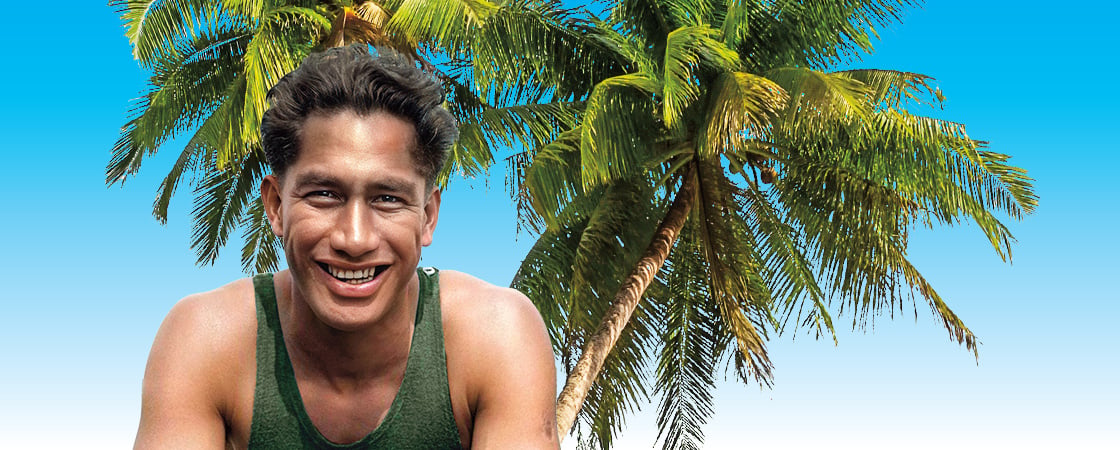Bettmann via Getty Images
Duke Kahanamoku
It was a sunny August day in 1912. A crowd gathered near the ocean in New Jersey. They watched the glittering water, waiting.
A man lay on a long wooden board, paddling through the water. A large wave curled toward him. With a quick hop, the man stood up and glided along the wave.
At first, the crowd was silent. Was he standing on water? Then they cheered! For most of them, this was their first time seeing someone surf. They were watching an athlete from Hawaii. His name was Duke Kahanamoku (kah-hah-nah-MOH-koo). And he was on a mission to bring surfing to America.
It was a sunny August day in 1912. A crowd waited near the ocean in New Jersey. They were watching the sparkling water.
A man lay on a long wooden board. He was paddling through the water. A large wave came toward him. The man hopped up quickly. He stood on his board. Then he glided along the wave!
At first, the crowd was silent. Was he standing on water? Then they cheered! For most of them, this was their first time seeing someone surf. They were watching an athlete from Hawaii. His name was Duke Kahanamoku (kah-hah-nah-MOH-koo). And he was on a mission to bring surfing to America.

